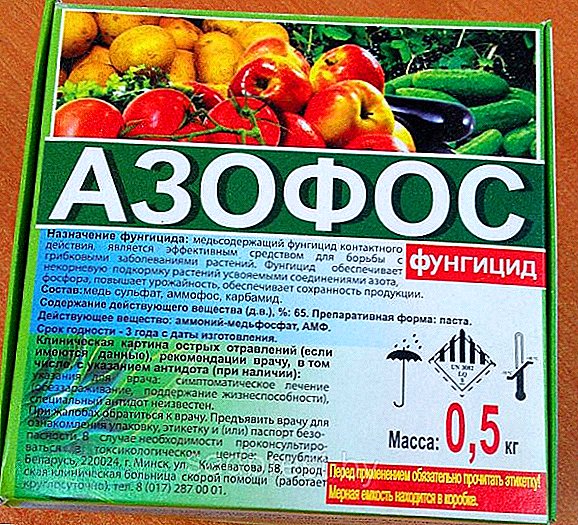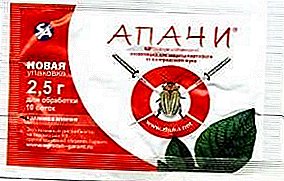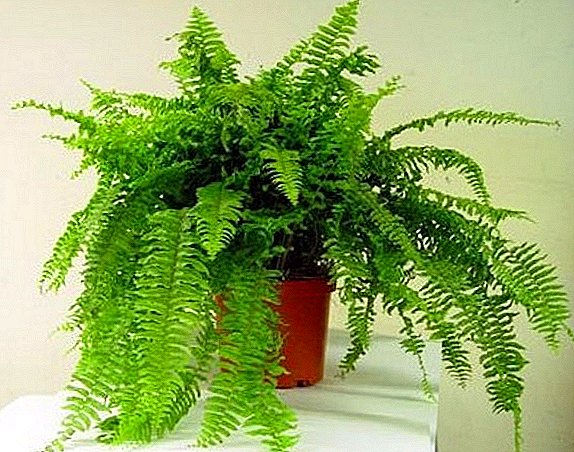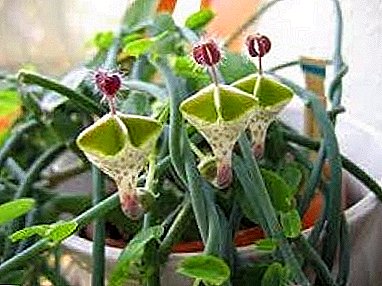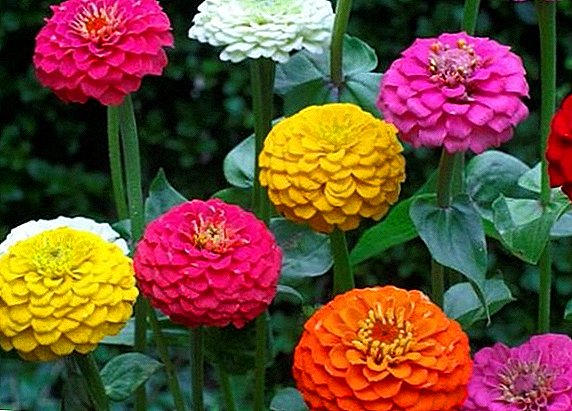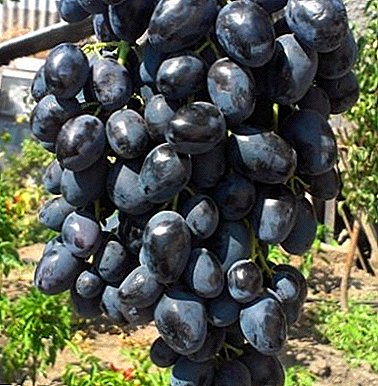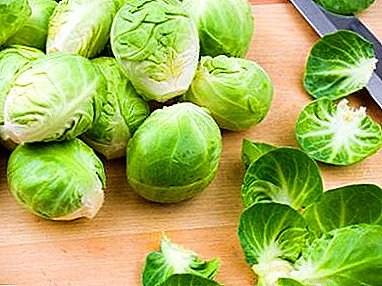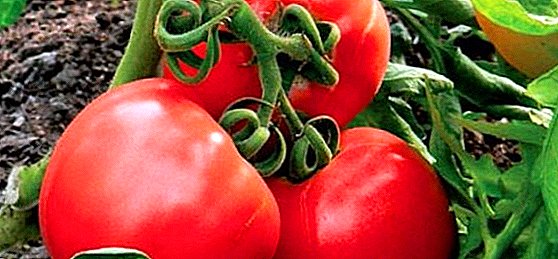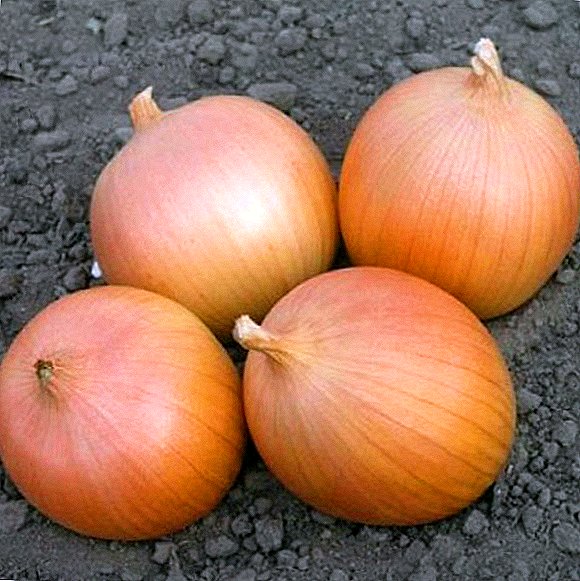 Onion "Setton" - Dutch variety, which is great for growing professional gardeners. It was obtained as a result of the work of breeders on the Sturon variety, which is why they are very similar, but Setton has more attractive characteristics for the consumer. Next, let's talk about its distinctive features and peculiarities of cultivation in various conditions.
Onion "Setton" - Dutch variety, which is great for growing professional gardeners. It was obtained as a result of the work of breeders on the Sturon variety, which is why they are very similar, but Setton has more attractive characteristics for the consumer. Next, let's talk about its distinctive features and peculiarities of cultivation in various conditions.
Variety description
The bulbs of this variety have a nearly perfect elliptical shape and golden scales. They are quite large, some specimens can weigh 200 g. The taste is poorly spicy. Most often, the variety is grown in Northern Europe.
The advantages of "Setton" should include:
- medium ripeness;
- high yield;
- resistance to various diseases and bolting;
- frost resistance;
- the possibility of long-term storage without germination and decay;
- almost 100 percent aging.
Did you know? Onions contain more sugar than apples and pears, which are released during the heat treatment, giving the vegetable a sweet taste.

The only drawback is the need for strict adherence to onion cultivation technology.
Characteristics of onions and yield
"Setton" refers to the mid-season varieties of onions. From 0.5 kg of seeds matures more than 90% of the possible yield - about 10 kg. From 1 square. m can collect up to 6 kg of bulbs, each weighing an average of 110 g
You will certainly be interested to get acquainted with the description and nuances of growing onion varieties such as "Exhibicin", "Centurion" and "Sturon".
This is a frost-resistant plant. With the complete absence of snow cover, it survives at -15 ° C, if it is, it is lower. The maximum temperature at which the onion is able to survive is -23 ° C.
Selection of planting material
Buy seeds only from a reputable manufacturer. They must be large and complete. 
If you have your own stock of planting material, choose only high-quality copies:
- shape - rounded;
- texture - dense;
- the absence of any traces of rot;
- root bowl - large, well-shaped;
- the scales are shiny.
Important! The weight of the bulb for planting should vary between 5-20 g.
Growing conditions
Onions like to be placed in open areas that are well lit by sunlight. Humidity should be low, and the soil should be moderately moist. Regarding groundwater, you should not choose a plot for onion beds in a place where groundwater is too close to the soil surface (up to 0.5 m). 
Soil and fertilizer
Such crops require nutrient, sandy or loamy, friable soil, which will be well to pass the air flow to the root system. The recommended acidity level is 6.5-7 pH.
We advise you to read about what types of soil exist, how to improve soil fertility, how to independently determine the acidity of the soil at the site, as well as how to deoxidize the soil.
The best predecessors for onions are:
- cucumbers;
- potatoes;
- cabbage;
- tomatoes
Do not plant it on a site where garlic or carrots previously grew. This adversely affects crop yields. The soil is prepared in the autumn: they dig up, remove weeds, make manure (5 kg per 1 sq. M). Immediately before planting it is recommended to level the seat with a rake. 
Growing seeds at home
Grow "Setton" at home is not so difficult. The main thing is to prepare the seed correctly and to provide high-quality care for the seedlings.
Seed preparation
Before planting, 3 hours later, the seeds must be placed in warm water, so that empty and unsuitable for planting specimens float to the top. For disinfection, planting material is soaked for another half an hour in a pink solution of potassium permanganate, after which it is washed and placed in hot water (about +50 ° C) for another 40 minutes.
Learn what to soak the onions before planting.Another important stage is hardening. To do this, immediately after warming the seeds are placed in the refrigerator for 30 minutes. Now the material is ready for planting.
Video: preparing onion seeds for sowing
Content and location
The material is planted in a pot with soil or peat cups. The perfect place - sill, sunny side.
Seed planting process
It is possible to germinate seeds before placing in the soil on a wet napkin in order to get a harvest faster. For this week is quite enough. Then the sprouted material is planted in special pots with nutrient, previously fertilized soil, or in peat cups, watered.
Seedling care
Before the onset of active growth, onions require regular abundant watering. For the first time after planting, plants are fertilized 10-14 days later with liquid organic matter.  Before transplanting into the open ground, they begin to harden, bringing out for a short period of time to fresh air, to the sun. The time spent on the street should increase every day. These events are held during the week.
Before transplanting into the open ground, they begin to harden, bringing out for a short period of time to fresh air, to the sun. The time spent on the street should increase every day. These events are held during the week.
Transplanting seedlings to ground
Onions are transplanted into open soil in early May, when its temperature exceeds the mark of +12 ° C. The soil is loosened beforehand and fertilized with organic matter. Do not forget to remove all weeds from the site.
Planting onions carried out with an interval of 9 cm between the bulbs. The recommended distance between the rows is 30 cm. It is possible to sprinkle the bulb on the ground with no more than 2-3 cm. It is better that all the beds are elevated.
Cultivation from sevka in open ground
The process of growing in open ground is slightly different from the above method. 
Site selection and soil preparation
"Setton" allowed to grow both in greenhouse conditions and in open areas, it all depends on climatic conditions. Planting in open soil is made when its temperature warms up to +12 ° C, in any other case the bow will need shelter.
The site should not be deprived of sunlight, the soil - drained and fertile. The preparation of the place starts from autumn. The soil is dug up and fertilized at the rate of 3 kg of organic fertilizers, 1 tbsp. l superphosphate, nitrophosphate and ash per 1 square. m
In the spring, the soil is leveled and poured with blue vitriol (1 tbsp. Per 10 liters of water). On 1 square. m plot lacks 2 liters of solution. After that, it is recommended to cover the bed with a film for a couple of days. Next, proceed to the preparation of planting material. 
Seed preparation
For starters, sevok is dried and warmed: for 2 weeks before planting, keep the temperature at +20 ° C, one day before disembarking - raise to +40 ° C. Another option is to immerse it in hot water (approximately +50 ° C) 20 minutes before landing.
The next stage is disinfection. It is carried out by treating the material with a manganese solution or copper sulphate. Additionally, you can handle special preparations to stimulate growth.
The process of planting sevka in the ground
Onions are planted in a bed (root to soil) with an interval of 9 cm. The distance between rows can reach a maximum of 30 cm, a minimum of 20 cm. Above the planting material is sprinkled with a 4-cm layer of soil and watered. Next, he will need quality care. 
Watering
Watering is carried out once every 7 days. Water consumption rate - up to 10 liters per 1 square. m plantings. With the onset of July, watering is reduced due to the beginning of the process of ripening bulbs. An exception is the drought period. At this time, the plants need more frequent hydration. 15-20 days before harvest "Setton" do not water.
Important! It is impossible to allow plants to wither.
Soil loosening and weeding
Loosening is carried out in order to increase the air permeability of the soil. To loosen the aisle regularly, and when the bow reaches medium size - to rake the earth and with him. Do not forget about weeding, weeds should not clog your plantations. 
Top dressing
Total for the season is 3 dressings:
- 14 days after planting, feed with liquid organics (10 l per 1 sq. M).
- After another month, mineral supplementation is necessary (ammonium nitrate and potassium sulphate from a consumption of 15 g per 1 sq. M).
- 2 months after the first feeding the plants are fertilized with calcium fertilizers.
Pests, diseases and prevention
Setton, like any other variety, needs prophylactic treatment against the fungus. When the feather reaches 15 cm in height, it is treated with a special solution of copper sulfate (1 tsp. Of substance + 10 l of water + 1 tbsp. Of liquid soap). They are sprayed only leaves. Consumption - 0.5 liters per 1 square. m
Before planting, it is recommended to disinfect the planting material with Bordeaux liquid or Quadris, otherwise the plant may further suffer from the following problems:
- neck rot;
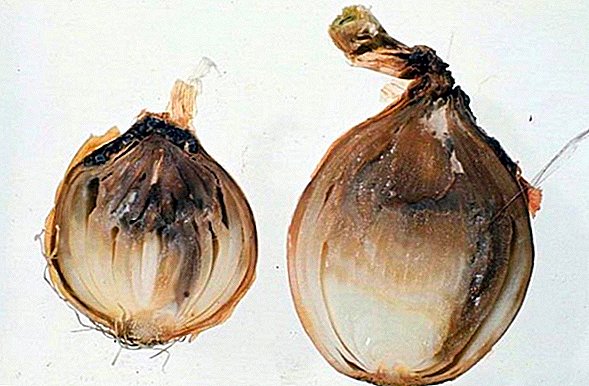
- downy mildew;
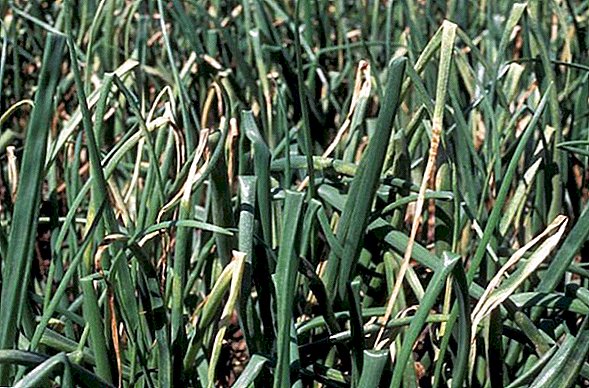
- rust;

- black mold;

We recommend reading about how to deal with pests of onions.
- Fusarium;

- nematodes;
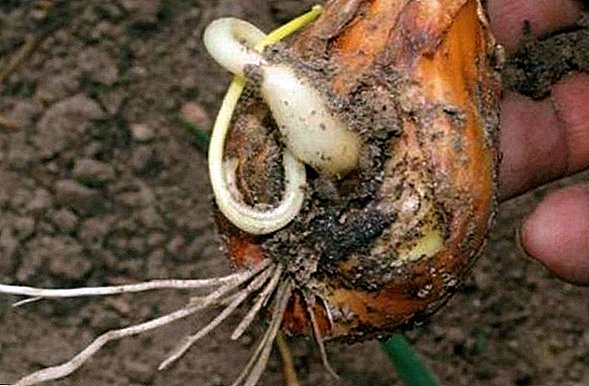
- onion flies.
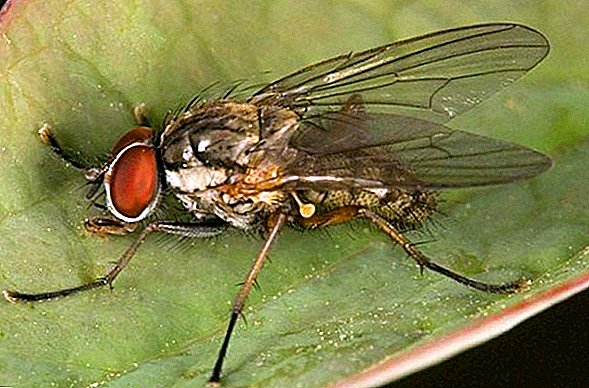
Harvesting and storage
Gather "Setton", as a rule, at the end of July or in August. The bulbs pull out completely from the ground with the tops and place in a warm place so that they dry out. Dry the leaves after drying onions should be cut off (the tip should be no longer than 4 cm) and leave it for another 10 days in the same place so that the tip should dry properly.
Keep it in a dry, warm, well-ventilated area for no longer than 7 months. The optimum air temperature is 0 ... +4 ° C, humidity - up to 75%.
Did you know? Lacrimator is a substance that causes tears that spill during onion slicing. It irritates the mucous membrane of the eyes and is particularly active when cutting a fresh vegetable.

Possible problems and recommendations
Due to improper onion care, the following problems may occur:
- The bluish-white color of the feather is a lack of moisture.
- Pale green feathers - an overabundance of moisture.
- Few greens and short feathers, slow growth - lack of nitrogen fertilizers.
- Gray corrugated feathers - a lack of potash.
- Drying onions ahead of time - lack of phosphate fertilizers.
You will probably be interested to read about how to store onions in the winter.
In addition, plants can suffer from the attack of pests and various diseases, if not to carry out preventive treatment. Onion "Setton" - mid-season frost-resistant variety.  It is often used for commercial purposes due to its high yield, storage time and ease of maintenance of plantings. With proper preparation of planting material with him almost no problems. Pay due attention to the care of this variety, and it will surely please you with a generous and high-quality harvest.
It is often used for commercial purposes due to its high yield, storage time and ease of maintenance of plantings. With proper preparation of planting material with him almost no problems. Pay due attention to the care of this variety, and it will surely please you with a generous and high-quality harvest.










